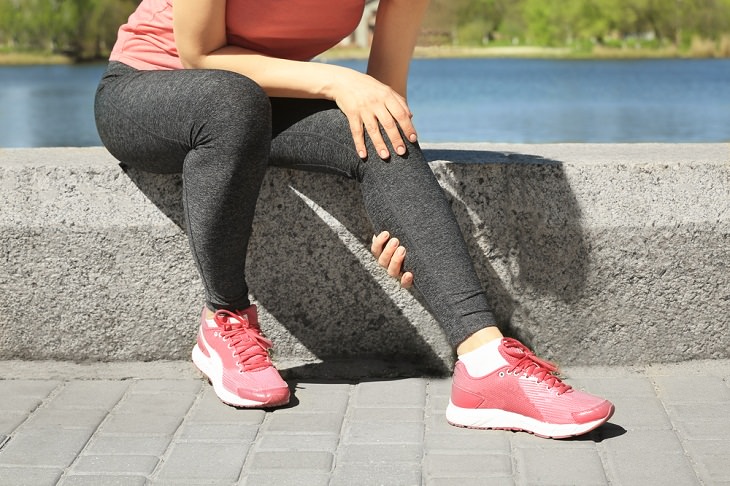These Mistakes Might Be Making Your Walks Less Effective
Walking is one of the most popular forms of
exercise in the world. After all, walking isn’t just simple and
effective, it’s also one of the safest ways to improve your health. One
of the biggest benefits of walking is that it’s easily accessible to
almost everyone. Furthermore, it’s a time-efficient and low-impact
activity and you can do it almost anywhere. Just a few minutes of
walking is good both for your health and your mood.
That being said, while walking is a
relatively easy activity, it is still important to follow the proper
techniques while doing it. Walking the incorrect way can lead to wasted
effort or even injury. Walking mistakes are more common than you realize
and hence it is important to be aware of them. Don't let these mistakes
hold you back from getting the full benefits out of this exercise. Here
is a look at a few common walking mistakes people make and how you can
fix them.
1. Wearing the wrong shoes
Picking the right pair of shoes before you
begin walking is of great importance. A lot of time people wear shoes
that are not the correct size or simply grab tennis and basketball
shoes. However, you must note that walking shoes should be lightweight
and flexible, while still providing support and cushioning. If the soles
of your shoes are stiff, then you won’t be able to bend them at all
while walking and that will make your feet uncomfortable.


Furthermore, if your shoes are more than a
year or two old, it’s likely that their cushioning and support have
already degraded. Ideally, you should replace your shoes every 500 miles
(804 km). Also, it goes without saying that you shouldn’t wear shoes
that are too small or too big. Wearing ill-fitting shoes while walking
can lead to friction blisters, pinching in the toe box, and general foot
pain.
Look for a shoe that has a well-padded heel and is light and breathable.
It should also be water-resistant. You can easily find good models
designed for walking these days.
2. Overstriding


While trying to walk faster, we tend to
lengthen our stride. However, taking really wide steps, or overstriding,
would mean that you are reaching out farther with your forward foot,
leading to a clumsy and awkward walking posture. Reaching really far in
front of yourself may make you feel a little off-balance and less
stable. Also, since you are planting your foot so much in front of you,
you’re almost restricting your foot's movement every time you land. This
extra force that is being applied to your feet and legs can cause your
shins to hurt.
The main strength of your walk comes from pushing with the back leg and
foot. Hence, you should focus on taking on shorter, quicker steps if you
have to walk fast. This will ensure that your spine is straight and in
proper alignment and won’t cause extra stress on your back or hips.
3. Walking despite an injury

It’s not a wise idea to keep walking if you have some form of injury or
pain on either of your feet. Even if the pain is mild or something you
feel can be ignored, what we don’t realize is that we are vulnerable to
stress fractures or other injuries with walking. For instance, you might
have some soreness or discomfort in your calf or thighs, but you decide
to muscle through it because you read that walking is beneficial for
you. This would only put you at risk for a potential injury.
Fitness experts suggest that we should generally start off with an
amount of walking that we can comfortably complete and only after we
have become accustomed to the routine for a few weeks should we increase
our distance and time. If you were primarily inactive for the past few
months, then you should start slow and low to reduce the risk of any
injury.
If you have some sort of pain in your feet, ankles, legs, or hips, or
are experiencing any trouble while walking, consult a doctor first
rather than simply pushing through the pain.
4. Picking the same route every day
Do you often find yourself getting bored while walking? Does your mind
wander off and you lose focus as you are walking? Then maybe the issue
is your route. Picking the same route for walking every day might make
you feel bored or lead you to lose interest in the process.
When you see the same surroundings on your walking route on a regular
basis, subconsciously you might feel as if you are stuck in a rut.
Eventually, you might even give up the exercise. Thus, it would be good
if you could change the route from time to time to keep things
interesting. Moreover, it will also be beneficial for your mood and
motivation. Try and keep switching between uncrowded lanes near your
area or some parks with waterfronts for your walking route every once in
a while to keep your interest in walking fresh.
5. Walking with a slumped stance

Many people develop a hunched posture from sitting at a desk or in front
of a computer all day long. That posture might be brought over to your
walking as well. A good posture for walking allows you to breathe well
and also helps you walk faster and longer.
The right walking posture is to keep your chin up when walking and make
sure that it is parallel to the ground. Your eyes should be forward and
focus on the street. Meanwhile, your shoulders should be down and
relaxed. As you walk, step your feet lightly from heel to toe and swing
your arms naturally and freely.
6. Making it all about your lower body


Walking shouldn’t just be all about your
lower body. Yes, your feet, ankles, and legs push you forward but your
upper body, especially the core, is equally important. Strong and
activated core muscles while walking will take some pressure off of your
feet and toes. This will also minimize the risk of overuse injuries
which impacts muscles, nerves, ligaments, and tendons.
While walking, tilt your torso slightly forward to keep your core
muscles busy. You should also pull your belly button in toward your
spine but make sure you don’t grip the muscles. Think of it like you're
doing a small crunch but while walking.
7. Swinging your arms too much
While it’s important to use your arms while
walking, it’s equally vital not to swing them too much or too wildly.
Many feel that the wild arm motion will give the body the extra push
while walking. That isn’t quite true. While you're walking, each arm
tends to move naturally with the motion of the opposite leg.
However, the movement shouldn’t be so exaggerated that your trunk is
moving back and forth erratically and is unsteady. Relax your arms and
let them move naturally instead of forcibly while keeping your elbows
close to your body. Not only will this motion look less silly, but it
will also let you focus on strength from your rear leg without wasting
motion in front of your body.
8. Walking without much intensity
Walking doesn’t need to be an intense
workout session. However, if you intend to walk with the intention of
losing weight or to boost your cardio, then it cannot be too
low-intensity. To maximize the health benefits of your walk, a
moderate-intensity walking routine would be appropriate for most age
groups.
According to the Centers for Disease Control and Prevention (CDC), the
range for moderate-intensity activity is 2.5 to 4 miles per hour (mph).
However, you should choose your pace depending on your fitness levels.
Generally, 100 steps per minute for adults under age 60 (about 3 mph)
should be good enough.
9. Not drinking enough water
It is essential to stay hydrated while
walking. Hence, you shouldn’t make the mistake of not drinking enough
water before, during, and after the activity. Firstly, make sure to have
a glass of water every hour throughout the day. This will ensure that
you are hydrated when you are starting out.
Then, drink a glass of water 10 minutes before your walk. During your
walk, you should drink a cup of water every 20 minutes or when you feel
thirsty. Once you finish your walking routine, drink a glass of water as
well. The key is to balance proper hydration with over-hydration.
Bear in mind, though, to avoid drinking any caffeinated beverages before
your walk. They will make you lose fluids and make you feel thirstier.
If you walk for two hours or more, carry an electrolyte-replacement
sports drink with you.
10. Not stretching later


New walkers generally tend to avoid any
stretching exercises after finishing their main routine. That, however,
is a mistake. Your muscles and tendons need to ease out when the walking
routine is done, or else they might get tight. The older you get, the
more important it is to stretch after every exercise routine.
A gentle stretch when you're done with your walk should be good enough.
Give your legs, particularly your calves, a decent workout. Don’t overdo
it, though. Stretches shouldn’t hurt or cause discomfort.
Do slow standing lunges for about 2-3
minutes. Slowly bend at the waist with slightly flexed knees and bend
forward. Hold each stretch for 10-20 seconds. For help with your
balance, use a chair or a wall.